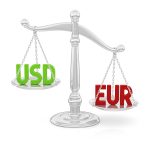Oct 27, 2022
VOT Research Desk
Market Insights, Considerations & Analytics
Performance Analytics – Fundamentals
Dollar, USDJPY, GDP, Nasdaq 100, Dow, and EURUSD According to The Market Perspective:
Bearish USDJPY Below 146; Bullish EURUSD Above 1.0000; Bearish Gold Below 1,680
Even though Facebook’s earnings would be just as disheartening as Google’s, the two companies’ effects on the Nasdaq were very distinctive, and neither was able contend with Apple. Event risk will pick up in the coming 48 hours with the ECB rate ruling, US 3Q GDP, Apple and Amazon earnings, and a lot more.
The general course of the markets over the past few weeks has reflected choppy progress higher when benchmarks for risk trends, such as the major US equity indices, are taken into consideration. However, the rise may be more due to the downturn in systemically important event risk preceding critical releases than to actual advancements in the fundamental landscape at the moment.
The time of going with a controlled tide may soon be over if we were indeed “coasting” higher before the serious event risk became apparent. In light of the sluggish release of FAANG earnings, we have already seen significant price declines from benchmarks like the Nasdaq 100.Nasdaq futures and the QQQs experienced significant declines prior to Wednesday’s opening due to the miss from Google’s earnings after the exchange closed on Tuesday.
After the tech-heavy index failed to “close the window,” which is technical jargon for covering the entire opening gap, the gap fell by -2.3 percent on the day of the ultimate loss.
The largest “upside wick” since March 8 was produced by the intraday bearish reversal. Notably, the after-hours response to Meta’s (formerly Facebook’s) 20 percent drop appeared to elicit a relatively muted response. The upcoming earnings reports from Apple and Amazon or important macro updates may be the focus of the markets.
Expectations can have a significant impact on market performance. This is especially true when the outcome of a previously reported event risk is ambiguous or when the weight of future events is significantly greater than that of the previously reported event risk. We find it useful to examine the performance comparison between the Nasdaq 100 and the Dow Jones Industrial Average to control for some of the anticipation skews.
Both are significant equity indices with all the ramifications of “risk,” and they also balance the US focus. However, in comparison to the Dow’s “value” label, the NDX reflects more of a “growth” measure. It is important to note that the NDX-Dow ratio reached its highest point in December, roughly on par with the Dot-Com peak in March 2000.However, the ratio continued to fall throughout the session to reach its lowest point since April 2020.
Event Risk Rises Significantly in the Future We believe that the greater level of anticipation for what lies ahead in comparison to the impact of what has already crossed the wires is a major contributor to the dissatisfaction caused by the lack of momentum—or at least a temporary channeling of volatility. A quick glance at the macroeconomic calendar reveals how much is on the docket through the end of the week. The references are extensive and dense in the listings
There is a lot to sort through, but over the past few weeks and months, we have seen themes with general priorities. We have observed specific systemic liquidity threats, trends in monetary policy, disparity in regional financial health, and recession risks over time.I n the event that any of the recorded (and unlisted) refreshes hits on any of these specific matters, producing a serious market response is more probable.
When looking at fundamental trends, most paths eventually lead back to the economy’s overall health. In other words, one of the most comprehensive and abstract risks we face is the likelihood and severity of a recession.
The performance of the world’s largest economy has a significant impact on how the world is viewed. However, the forecasts and data have not been particularly tardy.
The National Association of Home Builders (NAHB) has referred to the country’s housing market as going through a “recession,” and the Conference Board’s leading index has been declining for a long time.
Additionally, a recent NABE survey of CEOs revealed that two-thirds of respondents believed the nation would soon enter (or is already in) a recession, and just this past session, the US 10-year / 3-month Treasury yield curve—economists’ preferred barometer—inverted to issue We estimate that what carries the most fundamental weight over the long term doesn’t much matter when it comes to dictating price action over the immediate horizon.
Whether the 3Q US GDP meets, beats, or misses the 2.4 percent growth economist is likely to have an attentive crowd. That is a collective decision. We conducted a survey to find out what retail traders thought was the most potent upcoming market-moving event by asking that question to the open market.
Despite the significance of the upcoming rate decisions, the significance of the US GDP report, a long list of economic reports, and scheduled events; The combination of Apple and Amazon earnings due after the close of the New York session on Thursday was the top designated event risk. We can see the logic given the reaction to Google’s error this week;
However, it should be noted that there was not much competition for market attention with that theme. In the future, the threat radar will be overloaded.
EURUSD and USDJPY Draw Attention to two Important Rate Decisions When discussing rate decisions, there are good reasons to draw attention to the larger picture of monetary policy for the developed world. Given that the Federal Reserve is currently in a media blackout period until its announcement on Wednesday, speculation regarding the Fed’s direction will first and foremost need to occur naturally.
The likelihood of a fourth 75bp rate increase has clearly diminished. That may have something to do with the Bank of Canada (BOC) surprising markets this past session with a “simple” 50 bp increase in contrast to the consensus of the market for 75.There is a caveat to any disappointment because it is still a significant hike from historical perspective.
The BOJ, on the other hand, has been forced to respond to the fallout of a relentless dovish stance (yield curve control) with impotent intervention efforts on behalf of the Yen, which is a significant contrast to the hikes. The Dollar’s decline seems to be more to blame for the USDJPY pullback than any desire for the Yen.After the BOJ meeting on Friday morning, we’ll see how the picture changes.
The European Central Bank (ECB) decision that is due later today is the most significant and arguably the most anticipated monetary policy event of the week.
At its meeting, the European authority is expected to raise interest rates by 75 basis points in an effort to catch up on its woefully behind schedule inflation fight. The market’s concern about something “wrong” in the fundamental background would likely outweigh any favorable perspective of a longer run of lower rates.
Any shortfall in that move would likely cause more concern. The stakes are high for speculative interests after a high-profile break back above parity (1.0000) during the most recent session following a five-day rally









